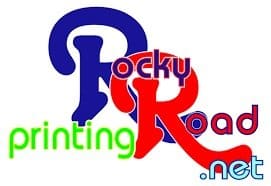The Detailed Process Behind Professional Custom Apparel Printing
The Art and Science of Custom Apparel Printing: Why Quality Takes Time
When you order custom apparel from a professional source like Rocky Road Printing, you’re investing in more than just a printed t-shirt or hoodie—you’re investing in a process that prioritizes precision, durability, and exceptional aesthetics. Unlike run-of-the-mill screen printing, quality custom apparel involves multiple detailed steps, each critical to achieving flawless results.
In this post, we explore the detailed production steps that set professional printing apart. From the creation of professional art to the final drying of ink, every stage adds value to your custom apparel.
1. Professional Artwork Preparation
The journey to quality custom apparel begins with professional art.
-
Why It Matters: A well-designed, print-ready file, typically created in industry-standard software like Adobe Illustrator or CorelDRAW, ensures that your image is clean, scalable, and accurately represents your brand.
-
Key Terms: print-ready artwork, vector art, professional design.
By investing in professional artwork, you eliminate issues like blurry images or improper color separations, setting the foundation for superior printing.
2. Creating a Screen Negative
Once the final design is approved, it’s time to create a screen negative.
-
Purpose: The screen negative is an essential component—it serves as a photographic stencil for transferring the image onto the screen.
-
Process: The design is transferred onto a transparent film which is then used in the screen preparation phase.
-
Key Phrases: screen negative, professional screen printing process, custom apparel preparation.
A high-quality screen negative ensures that every detail of your design is captured accurately on the screen.
3. Coating the Screens
With the negative ready, the next step is coating the screens.
-
Overview: Coating involves applying a light-sensitive emulsion to the screen, preparing it for exposure.
-
Importance: A uniform coat is essential for consistent image reproduction and minimizes imperfections during printing.
-
Key Terms: screen coating, emulsion, even coating for printing.
This step guarantees that your design transfers correctly onto the fabric, preserving intricate details.
4. Exposing the Screen
After the screens are coated, they must be exposed to a light source.
-
What Happens: Exposure hardens the emulsion on the screen except where the image should appear. This creates a stencil for ink to be pushed through.
-
Benefits: Precise exposure leads to accurate, detailed images on your apparel.
-
Key Phrases: screen exposure, precise image reproduction, high-quality screen printing.
The exposure phase is critical—the accuracy of the image on your apparel directly depends on this step.
5. Press Setup
Now, all preparations lead to the exciting part: press setup.
-
Setup Details: The prepared screen is carefully aligned on the printing press with your garment below it, ensuring perfect registration with each print.
-
Significance: A properly set-up press guarantees that every print is consistently aligned and sharp.
-
Key Phrases: press setup, equipment calibration, proper registration in screen printing.
This stage is crucial for delivering consistent quality across every piece of custom apparel.
6. The Printing Process
With the artwork prepared, screens exposed, and press set up, it’s time for the actual printing.
-
Process: Ink is forced through the screen onto the fabric, capturing every detail of your design.
-
Attention to Detail: The process involves careful pressure control, speed, and alignment to avoid smudging and ensure crisp lines and vibrant colors.
-
Key Terms: high-quality printing, custom apparel printing, professional screen printing.
Every movement during printing is meticulously controlled to maintain the highest standards of quality.
7. Proper Drying of Ink
The final step in this detailed process is proper drying of the ink.
-
Importance: If ink isn’t cured correctly, it can lead to issues like smudging, fading, or even cracking over time.
-
Method: Specialized drying ovens and precise time settings are used to cure the ink, ensuring longevity and durability of the print.
-
Key Phrases: ink curing, proper drying, durable custom apparel.
Effective drying not only secures the print but also extends the lifespan of your custom apparel, keeping colors vibrant and designs intact.
Why Time Matters in Custom Apparel Production
Each step—from professional art preparation to proper drying of ink—is essential for producing high-quality custom apparel. At Rocky Road Printing, we take the time to meticulously follow every step of the process, guaranteeing that you receive a product that looks professional, feels durable, and represents your brand with pride.
Key Benefits:
-
Enhanced Quality: Every detail is refined for a flawless finish.
-
Long-Lasting Prints: Proper techniques ensure that prints remain vibrant and intact.
-
Professional Appearance: A well-printed logo or design builds trust with customers.
-
Value for Investment: Attention to every step means fewer reprints and less waste.
Final Thoughts
While custom apparel may require time to produce, the results speak for themselves. Quality custom printing—from professional art to meticulous press setup and precise ink drying—ensures that your investment turns into a lasting brand statement.
Rocky Road Printing is your local professional source for custom apparel that stands out. When you choose us, you’re choosing quality, attention to detail, and a commitment to excellence in every print.

